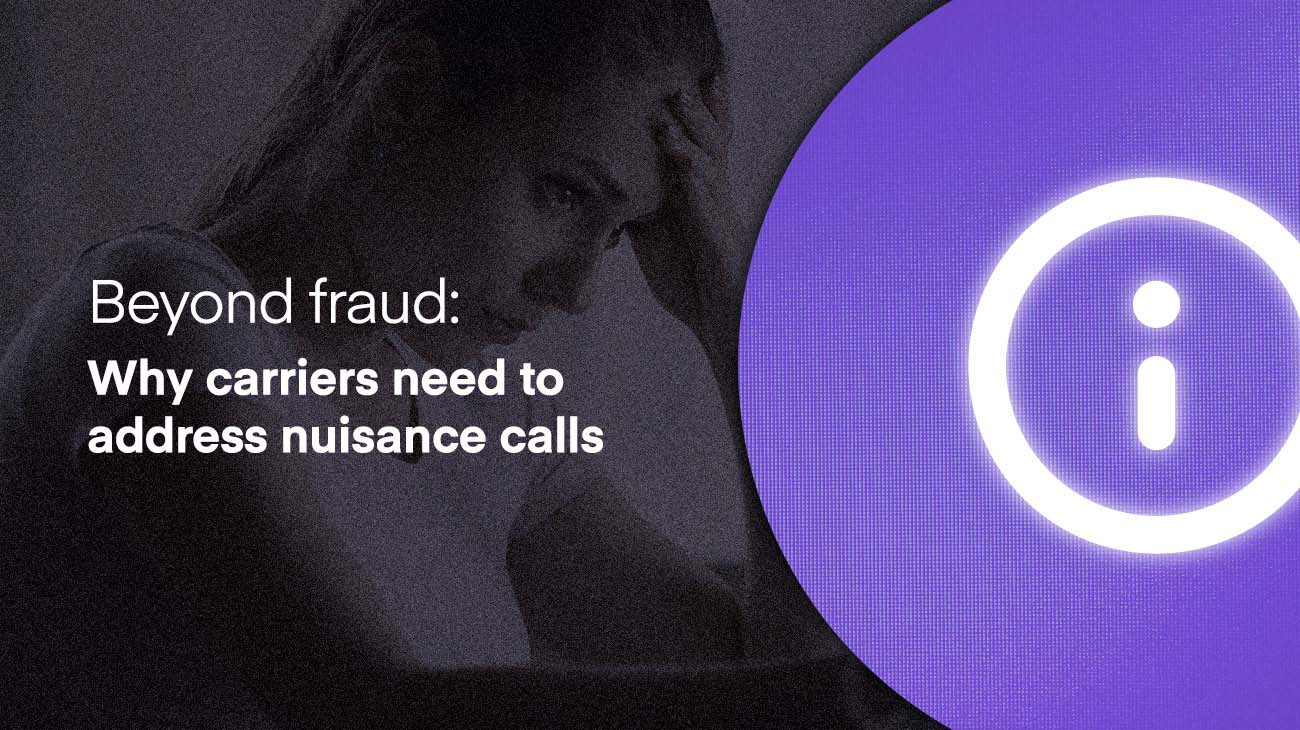
Carriers put a lot of effort into stopping scam and fraud calls. And rightly so, as these calls are intended to steal money and/or personal information from their subscribers. But there is another type of unwanted call that gets less visibility: nuisance calls.
Whereas fraud calls are illegal and intended to do harm, nuisance calls are annoyances — often legal, but still unwanted.
Yet, aggressive nuisance calls are much more prevalent than fraud calls. For example, Hiya’s State of the Call Report shows that in most countries, nuisance calls far outnumber fraud calls.
Some carriers focus only on preventing scam and fraud calls, but do little to shield their customers from nuisance calls. Hiya puts just as much effort into identifying nuisance calls as it does fraud calls, knowing that both types of unwanted calls can be extremely frustrating to subscribers.
Why protect against nuisance calls?
Carriers must comply with governmental regulations, and most of those are targeted at preventing illegal calls, not so much calls that are frustrating, bothersome, or overly aggressive.
But to the end user, it doesn’t matter whether the call is legal or illegal — it’s simply a call they don’t want to receive. The most aggressive nuisance calls can even be difficult for a consumer to distinguish from illegal calls. All these unwanted calls degrade the consumer’s confidence and trust in the voice channel, reducing the likelihood of subscribers picking up any call, so it’s in the carrier’s best interest to protect subscribers from aggressive nuisance calls in addition to illegal fraud calls.
15 categories of spam calls
Hiya’s voice security solution, Hiya Protect, is capable of identifying 15 categories of spam calls, including fraud. Others include telemarketer, debt collector, political, nonprofit, robocaller and more. Carriers can then configure what type of call treatment — such as allowing the call through, labeling it, or blocking it entirely — each type of spam should get. It’s common for carriers using Hiya Protect to prevent all fraud calls from reaching subscribers, as well as flag nuisance calls to give subscribers the choice to decide whether or not they want to pick up.
How Hiya identifies unwanted phone calls
Hiya’s Adaptive AI uses a wide range of data to determine if a call is potentially spam, and this includes both fraud and nuisance calls. However, when it comes to identifying nuisance calls, user feedback can be an especially relevant source of data — after all, it’s the user that determines whether a call is wanted or not in the first place.
Consumers that are protected by Hiya through an app or mobile device — such as through the Hiya Mobile App — can report calls as spam and can even tell Hiya which category of spam the call falls into. This data helps Hiya properly identify the type of spam, labeling it for users so they can decide whether they want to pick up the call.
Hiya looks at additional data sources when determining whether a call is likely to be spam. Data points like low answer rates and short call durations (e.g. the recipient answered the call and quickly hung up) indicate that this type of call could be unwanted by recipients.
Again, carriers can decide how to use the information that Hiya provides. Some carriers offer their customers a mobile app that lets the customer customize their spam settings. For example, one subscriber may set up the app to block all incoming nuisance calls except for nonprofit and political calls. Another user may choose to let all calls ring through and decide later whether to answer the call based on the type of call it is.
One of Hiya’s carrier customers, Gabb Wireless, specializes in offering mobile phones for children aged 5 to 18. It blocks all nuisance and fraud calls before they ever reach the child. Read more about Gabb Wireless.
How can enterprises help?
For legitimate enterprises making calls, there are steps they can take to create a positive calling experience for recipients — making them more likely to be answered and less likely to be considered unwanted spam. First and foremost, enterprises should adhere to calling best practices to ensure a positive experience for their recipients.
Another step they can take is to add branded caller ID so recipients know who and what to expect when they pick up the phone. For example, Hiya offers Hiya Connect, a branded caller ID solution which enables businesses to display their company name, logo and reason for calling on the recipient’s mobile phone. Hiya Connect also offers analytics tools that can help enterprises understand how calls are being received by recipients, including seeing the comments real users submit when reporting a call as spam.
One thing enterprises should avoid is using the same types of calling practices as aggressive spammers and scammers. That includes aggressive calling, calling at odd hours, calling too often, rotating phone numbers and more.
What carriers can do to protect subscribers from aggressive nuisance calls
Carriers can protect their subscribers and increase customer satisfaction by using a robust call protection system that protects against both fraud calls and nuisance calls — such as Hiya Protect. Hiya Protect uses Adaptive AI, the industry’s only self-learning spam protection system that adjusts to the latest fraud and aggressive nuisance calls. Unlike other solutions, it uses a multi-layer approach to analyze every aspect of a phone call, from the phone number to the call recipient, the enterprise making the call, and the characteristics of the call itself.
For more information about Hiya Protect, visit our website, or send us a message.



